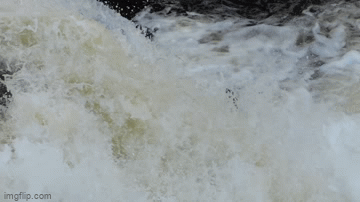Salmon are born at the headwaters of rivers, grow up, and swim out to sea. When they reach spawning age, they swim back upstream to the place where they were born.

Atlantic Salmon swimming upstream to their spawning grounds.
Recently, Newsflare.com published a video capturing the sight of salmon swimming upstream as autumn approaches for their spawning season.
The video was recorded by an angler visiting the Scottish Highlands between late August and early September. The footage shows salmon leaping at Shin Falls, near the village of Lairg. The slow-motion, high-resolution clips depict Atlantic Salmon making their way upstream to their spawning grounds further up the river.
The video owner remarked: “These are Atlantic Salmon returning to the river where they were born to lay their eggs.”
Atlantic Salmon begin their lives in the headwaters of rivers in North America, Europe, and especially the United Kingdom. Mother salmon lay their eggs in a gravel nest, where they will incubate the eggs throughout April and May.
After 3 to 4 weeks, the eggs hatch, and the fry immediately start swimming around the nest to forage for food. Upon reaching adolescence, when they exceed 15 cm in length, the salmon decide to swim out to sea. They reside there for about 1 to 3 years until they reach spawning age. The salmon then turn back, determined to find their childhood river and produce a new generation. They lay their eggs and subsequently die in the same place.

















































